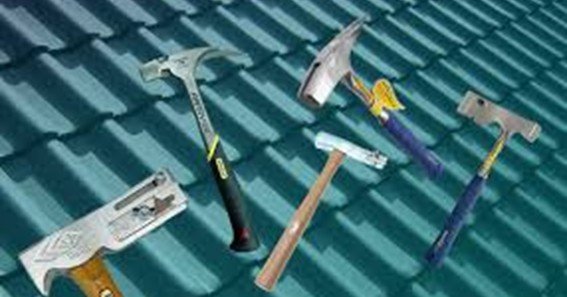When tackling roofing projects, a common question arises: why is a shingling hammer ideal for roofing work? This indispensable tool is specially designed to meet the unique demands of roofing tasks. In this blog, we’ll delve into the features that set the shingling hammer apart, its benefits for both new and seasoned roofers, and provide practical tips to maximize its performance on the job.
What Is a Shingling Hammer?
A shingling hammer is a specialized roofing tool engineered primarily for the installation and removal of shingles. It combines the functionality of a traditional claw hammer with additional features tailored to roofing applications, such as a vibrating head for efficient nail driving and a unique design that minimizes damage to the shingles. This tool is crafted to deliver high impact and precision, which is critical when working on pitched roofs.
Why Is a Shingling Hammer Ideal for Roofing Work?
Enhanced Efficiency and Precision
-
Dual-Function Design:
The shingling hammer features a flat striking face for driving nails and a curved claw for gentle shingle removal, reducing the risk of damaging your roofing material. This dual design streamlines your workflow by eliminating the need for multiple tools. -
Optimized Weight and Balance:
Roofers benefit from a well-balanced hammer that offers a comfortable swing. Its weight distribution is specifically engineered to reduce fatigue during extended work sessions, making it easier to maintain speed and accuracy. -
Improved Impact Force:
With a sturdy and durable construction, a shingling hammer delivers consistent impact force, ensuring nails are driven securely into roofing materials. This reliability increases the longevity and safety of the roofing installation.
Ergonomic and Durable Construction
-
Comfort and Grip:
Ergonomically designed handles provide excellent grip and reduce vibration, which minimizes hand fatigue and the risk of repetitive strain injuries—a significant advantage when working on large roofs over many hours. -
Weather-Resistant Materials:
Constructed from high-quality metals and treated wood or composite handles, these hammers are built to withstand harsh weather conditions and the demanding physical environment of roofing sites. -
Versatile Use:
While primarily designed for roofing, the shingling hammer’s multifunctionality means it can also be used for other construction tasks, making it a valuable addition to any builder’s toolkit.
Maintenance and Care Tips for Your Shingling Hammer
To keep your shingling hammer functioning at its best, follow these simple maintenance tips:
-
Regular Cleaning:
After each use, wipe down the hammer to remove dirt, dust, and any adhesive residue from shingles. This helps prevent corrosion and maintains performance. -
Inspect the Handle and Head:
Periodically check for any signs of wear or damage. Ensure the handle remains firmly attached and that the striking face and claw are free of dents or deformities. -
Store in a Dry Place:
Keep your hammer in a dry, secure location to prevent rust and prolong its lifespan. -
Replace When Necessary:
If the handle becomes cracked or the head shows significant wear, it is wise to replace the tool to maintain safety and efficiency.
Frequently Asked Questions
-
Why is a shingling hammer ideal for roofing work?
A shingling hammer is ideal for roofing work due to its dual-function design that combines efficient nail driving with careful shingle removal. Its optimized weight, ergonomic handle, and durable construction make it a must-have tool for roofers seeking to enhance productivity and reduce material damage. -
How does a shingling hammer differ from a standard claw hammer?
Unlike a standard claw hammer, a shingling hammer is specifically designed for roofing. It features a flat face for precise nail driving and a curved claw that minimizes damage when removing shingles. Additionally, its construction is optimized for the specific challenges of working on pitched roofs. -
What materials are commonly used in the construction of shingling hammers?
Shingling hammers are typically made from high-quality forged steel for the head, and the handles are often crafted from treated wood or composite materials. These materials are chosen for durability, optimal weight distribution, and resistance to harsh weather conditions. -
Can I use a shingling hammer for other construction projects?
Yes, while designed with roofing in mind, the multifunctional design of a shingling hammer means it can also be used for other general construction or demolition tasks where precision and controlled force are required. -
How should I maintain my shingling hammer for long-lasting performance?
Regular cleaning, periodic inspections for wear, proper storage in a dry place, and replacing components when necessary are key to maintaining your shingling hammer. Following manufacturer guidelines ensures that the tool continues to perform optimally over time.
Conclusion
Understanding why is a shingling hammer ideal for roofing work helps unlock the secret to safer and more efficient roofing projects. With its specialized design, robust construction, and ergonomic features, this tool not only enhances nail driving and shingle removal but also protects your roofing materials from unnecessary damage. By following proper maintenance tips and leveraging its versatility, roofers can improve productivity and ensure a higher quality installation every time. Whether you are a professional roofer or a DIY enthusiast, investing in a quality shingling hammer is a game-changer for your roofing toolkit.
Keep reading for more information on why-is-halloween-worse-than-xmas










